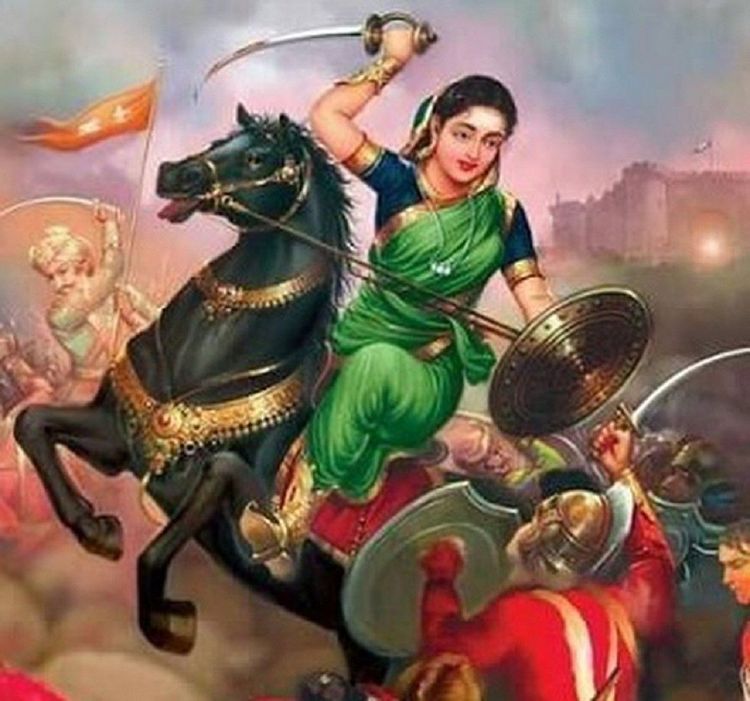For smooth Ad free experience
For smooth Ad free experience
Tarabai reigned over India's majestic Maratha Empire for a few years in the early 1700s. Rarely in Indian history has a female personality who saved a kingdom from collapse by sheer courage and resolve. She merits more recognition than she gets, as her tenacious spirit rivalled that of the famed Rani of Jhansi.

Armani Queens of the Vintage Times
Tarabai was born on April 14, 1675, into the Maratha Empire's Mohite family. Her father, Hambirao Mohite, was a well-known Maratha army commander-in-chief. As a result, she received early instruction in archery, sword fighting, military strategy, and statecraft. She married Rajaram, Chhatrapati Shivaji's younger son, when she was eight years old. This happened at a period when the Mughals and Marathas were in war of the Deccan.
When Mughal Emperor Aurangzeb's forces lay siege to Raigad in 1689, Chhatrapati Sambhaji was slain, and his wife9(Yesubai) and son(Shahu) were taken prisoner. Thus, the title of Chhatrapati transferred to Rajaram, who, together with Tarabai, had escaped the siege. They reached Gingee Fort (Tamil Nadu), the kingdom's southernmost bastion. When the Mughal army besieged the fort, she seized charge due to Rajaram's failing health and held the fort for eight years. In 1696, she gave birth to Shivaji II there as well.
When Rajaram died of serious lung disease in 1700, Tarabai named her four-year-old son, Shivaji II, as the heir apparent and therefore became queen regent, a position she retained for eight years. She led from the front as regent. She employed Aurangzeb's methods against his army and government with success. By 1706, her armies had advanced far into the Mughal-held provinces of Gujarat and Malwa. She also appointed her own 'kamaishdars' (tax collectors) in these areas.
When Aurangzeb died in 1707, a succession conflict erupted between his sons, Azam Shah and Shah Alam. To sow discord among Tarabai's adherents, the Mughals released Prince Shahu, the son of the assassinated Sambhaji, as a new pretender to the Maratha crown. She denied Shahu's claim, sparking a full-fledged dispute. However, it also resulted in the departure of a number of her commanders who believed that Shahu's right to the succession was the most legal.
She was ultimately forced to give him the title of Chhatrapati in 1708, due in part to the involvement of Peshwa Balaji Vishwanath. Tarabai established a competing power structure at Kolhapur, but it was demolished by Rajaram's second wife, Rajasabai, who installed her son, Sambhaji II, on the Kolhapur throne instead. As a result, she and Shivaji II were imprisoned, and her son died in captivity in 1726. When Sambhaji II became hostile to Chhatrapati Shahu, the latter released Tarabai from prison and offered her to dwell at Satara palace, but without political authority.
During the later years of Shahu's life, she brought him a kid and introduced him as Ramraja (Ramraja II), her grandson, whom she had hidden from everyone out of concern for his life. Because Shahu had no heirs, he adopted the young prince who became Chhatrapati Rajaram II when Shahu died in 1749.
However, when Rajaram II refused to remove Nana Saheb from the position of Peshwa, she had him imprisoned in Satara in 1750 and disowned him, claiming that he was an imposter. During that time, a segment of the Satara garrison (city in Sahayadri mountains of Maharashtra) rebelled against her, and while she put down the mutiny, she understood it would be difficult to maintain control.
In 1752, she ultimately consented to a ceasefire with Peshwa Nana Saheb, accepting the latter's authority and her place as a dowager, although a sovereign and strong one. Rajaram II was reestablished as the Chhatrapati by Nana Saheb. She died on December 9, 1761, at the age of 86, in Satara, having outlived both her family and her political opponents.
0
You might be interested in reading more from
